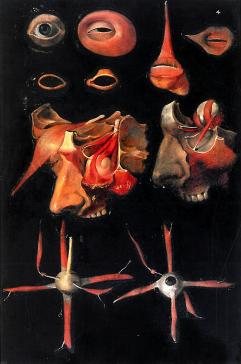Questions surrounding the origin of color, its relationship to light and illumination, and how color affected the eye were vigorously debated within the many Aristotelianisms at the end of the Renaissance. Color theory provides a crucial link between matter and vision, between theories of vision and anatomical investigation of the eye, and between craftsmen, artists, physicians, and schoolmen. However, these accounts of color and perception have not been well studied, and thus how scholastic accounts engaged with, influenced, and were modified by ideas and practices outside of the universities is also rather obscure. Additionally, although much has been written about Kepler, Galileo, Descartes, and Newton, unless a detailed analysis of theories of vision and the sensible qualities held by earlier figures is carried out, the monumental changes that took place in the seventeenth century will be imperfectly understood.
This project investigated theories of color and vision among three influential figures at the University of Padua: Jacopo Zabarella, Professor of Logic and Natural Philosophy, Hieronymus Fabricius ab Aquapendente, Professor of Surgery and Anatomy, and Julius Casserius, Fabricius’s servant, student, and eventual colleague and rival in surgery and anatomy at Padua. All three are notworthy for the interdisciplinary nature of their investigations—they all provided both detailed philosophical accounts of the generation of color, its nature, and the nature of vision, as well as anatomical accounts of the structure, action, and utility of the eye. All three were also involved in larger intellectual circles in Padua and Venice that included artists, literati, and virtuosi. Additionally, the two anatomists worked closely with artists to produce celebrated anatomical engravings and, in the case of Fabricius, colored tables as well. These figures thus give us an important window into the dynamic relationship between color, philosophy, anatomy, and art on the edge of the scientific revolution.

